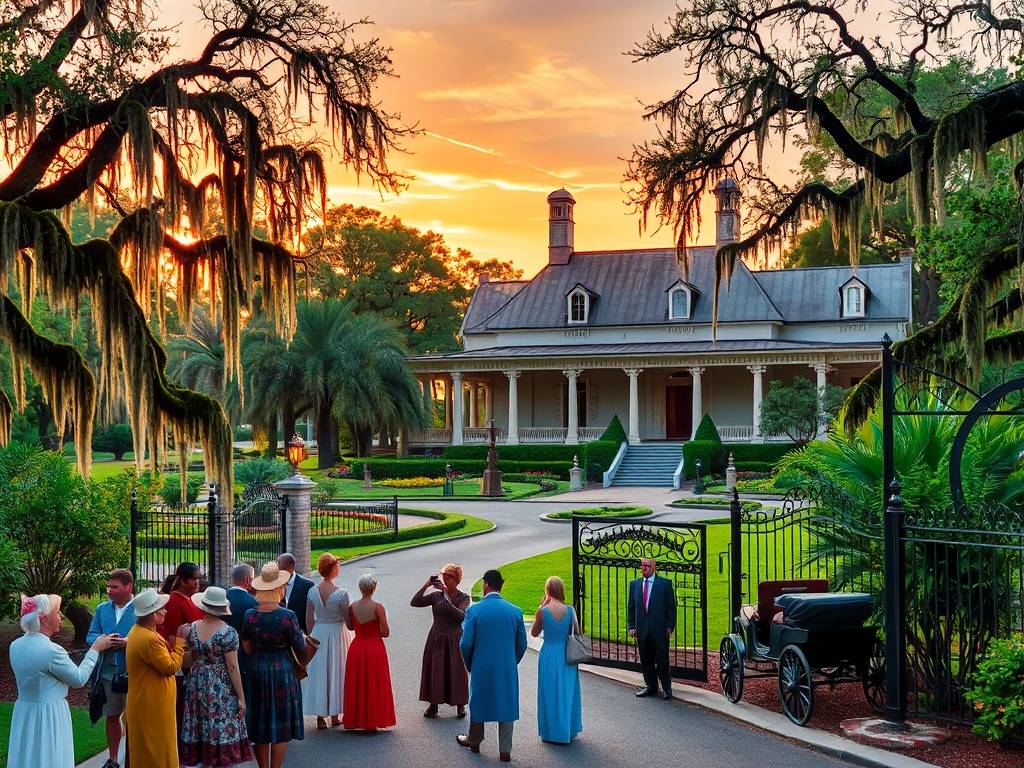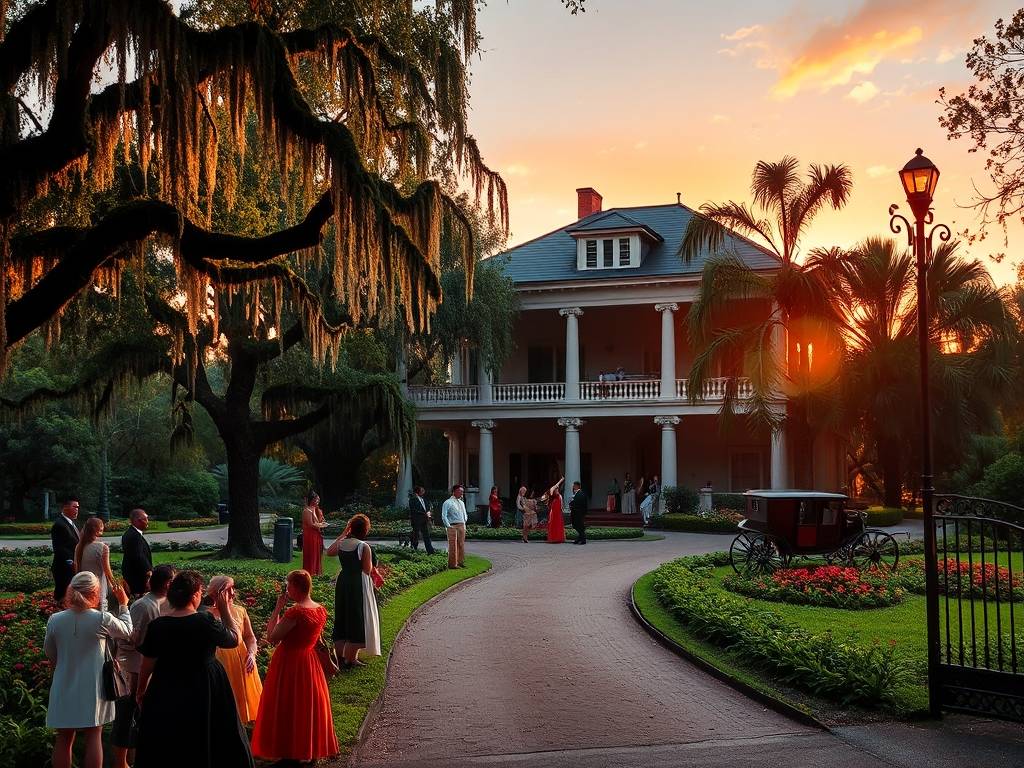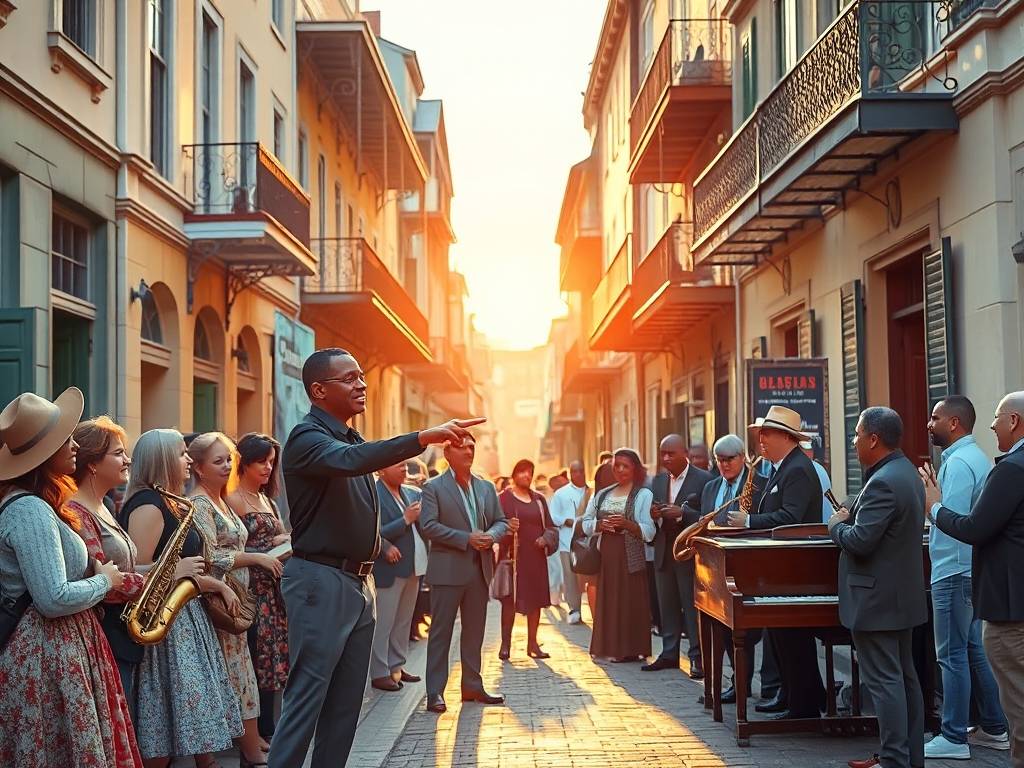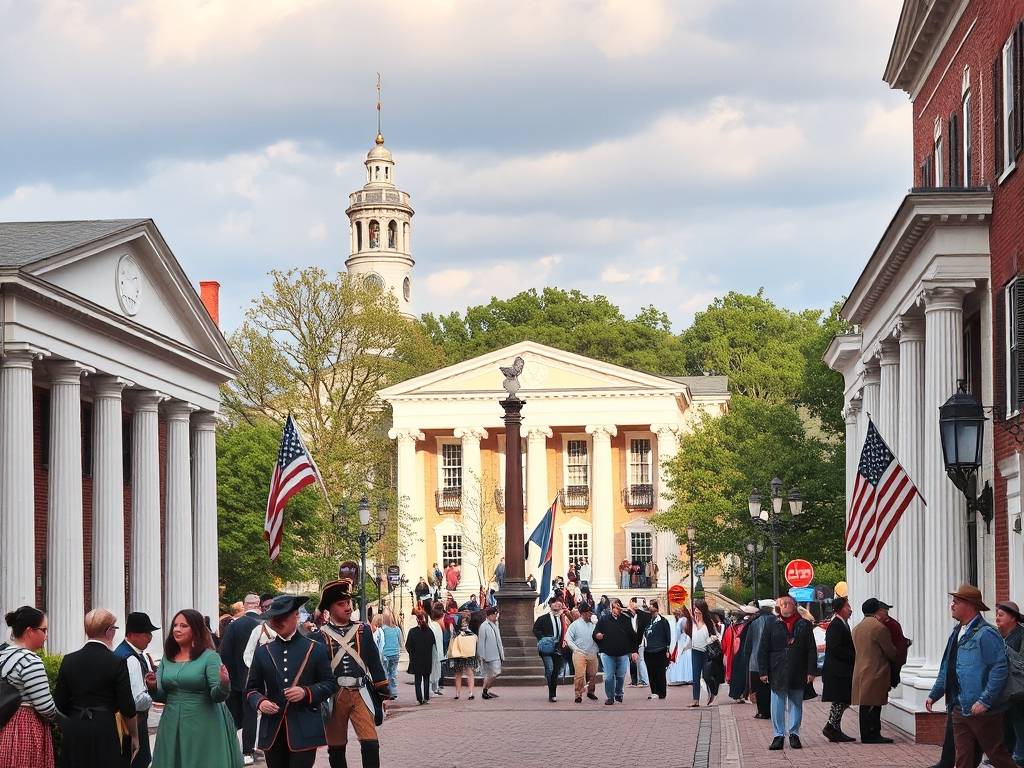USA Travel
US Travel: Historic Plantation Tours in Louisiana’s New Orleans Vicinity
Echoes of the Past: A Journey Through Louisiana's Historic Plantations
There's a certain magic in the air of Southern Louisiana, a palpable sense of history that whispers through the ancient, moss-draped oak trees. Just a short drive from the vibrant, jazz-filled streets of New Orleans lies a different world—one of serene bayous, sugarcane fields, and grand, columned homes that stand as silent witnesses to a complex and often painful past. Embarking on a historic plantation tour near New Orleans is more than just a sightseeing trip; it's an immersive journey into the heart of the Antebellum South, an experience that challenges, educates, and profoundly moves visitors.
For any traveler seeking to understand America's story, these Louisiana plantation tours are essential. They offer a unique, albeit somber, perspective on the nation's economic, social, and cultural fabric. This guide is designed to help you navigate these powerful sites, ensuring your visit is respectful, insightful, and unforgettable.

Choosing Your Path: The Different Narratives of Plantation Homes
One of the first things you'll notice when planning your tours of plantations in Louisiana is the variety of stories they choose to tell. Broadly, they fall into two categories, and visiting at least one from each group provides a more complete picture.
-
The Grand Manor Narrative: Plantations like Oak Alley and Houmas House are famed for their breathtaking, picture-perfect beauty. The focus here is often on the architectural splendor of the "Big House," the lives of the wealthy owners, and the ornate furnishings. Walking the grounds of Oak Alley, with its iconic quarter-mile canopy of 300-year-old live oaks leading to a stunning Greek Revival mansion, is a truly awe-inspiring moment. These tours are exceptional for understanding the immense wealth generated by agricultural empires and the aesthetic aspirations of the planter class. They answer the question of how the privileged lived in stunning detail.
-
The Enslaved People's Narrative: In recent decades, a vital and necessary shift has occurred. Many plantations now dedicate their tours to telling the stories of the enslaved men, women, and children who were the backbone of these estates. Whitney Plantation is the pioneer in this field, standing uniquely as a museum dedicated solely to the experience of slavery. Here, the "Big House" is almost secondary to the restored slave cabins, the poignant Wall of Honor, and the haunting sculptures of children in the Field of Angels. Similarly, Laura Plantation offers a rich, Creole history heavily informed by extensive historical records, including first-person accounts from enslaved individuals. These tours answer the crucial question of who built and sustained these estates through forced labor, giving voice and dignity to those who were long silenced.
A Traveler's Guide to Must-Visit Plantations Near New Orleans
Located along the famed Great River Road, which traces the curves of the Mississippi River, these estates are conveniently clustered, making it possible to visit two in a single day. Here’s a closer look at some of the most significant historic homes in New Orleans' vicinity.
Oak Alley Plantation Perhaps the most photographed plantation in the South, Oak Alley is the quintessential image of the Antebellum era. The main draw is, without a doubt, the majestic alley of twenty-eight oaks. A guided tour of the mansion reveals the lives of the Roman family, who built the home in 1839. For a deeper understanding, be sure to take the "Slavery at Oak Alley" tour, which explores the lives of the over 200 enslaved people who lived and worked here, and visit the reconstructed slave cabins. It’s a place where beauty and history exist in stark, powerful contrast.
Whitney Plantation A visit to Whitney is a sobering and essential educational tour of a slavery museum. From the moment you arrive, the narrative is clear and focused. You are given a lanyard with the name and story of an enslaved person, personalizing the experience from the start. The memorial walls etched with thousands of names, the stark "The Children of Whitney" statue group, and the moving Antioch Baptist Church, filled with sculptures of emancipated children, create a powerful, emotional tribute. This is not a tour about architecture; it's a pilgrimage dedicated to memory, resilience, and truth-telling.
Laura Plantation Listed on the National Register of Historic Places, Laura offers a distinctively Creole story. The 1805 manor house is vibrant with colors, reflecting its French West Indies influence. The tour, based on the memoirs of Laura Locoul Gore, is a fascinating dive into four generations of a family of women who ran the plantation, their financial struggles, and the complex social dynamics. The tour brilliantly weaves in West African folktales, like the Br'er Rabbit stories, which were recorded here from the oral histories of enslaved storytellers, directly linking the culture of the enslaved to a broader American legacy.
Houmas House Plantation and Gardens Often called the "Sugar Palace," Houmas House represents the peak of sugar industry wealth. The mansion is opulently furnished, and the grounds are a horticultural masterpiece with 38 acres of lush, beautifully manicured gardens, ponds, and fountains. The tour leans into the grandeur and luxury of the plantation owner's life. While it offers a more traditional "Big House" experience, it also incorporates information about the enslaved community. It's a great choice for those interested in historic gardens and a more visually sumptuous setting.
San Francisco Plantation Not to be confused with the city, this plantation is architecturally unique. With its bright, steamboat-style Gothic Revival design, it stands out from its more classical neighbors. The detailed tour covers the lavish lifestyle of the owners and the immense cost of maintaining such an estate, which inevitably leads to discussions of the enslaved labor that made it possible.

Planning Your Deep South Historical Tour
To make the most of your visit, a little planning goes a long way.
- Booking Tours: You can book guided tours from New Orleans that include transportation, or you can drive yourself for more flexibility. The best plantation tours from New Orleans often combine two different plantations, like Oak Alley and Laura, to provide a balanced perspective.
- Time and Attire: Plan for at least two to three hours per plantation. The Louisiana climate is humid and hot for much of the year. Wear comfortable walking shoes, light clothing, and bring water. Don’t forget insect repellent.
- Mindset and Respect: Approach these sites with respect and an open mind. They are not just beautiful photo opportunities; they are hallowed ground, sites of profound suffering and endurance. Listen to the stories, especially those of the enslaved, and allow yourself to be moved by them.
A journey to the historic plantations near New Orleans is a powerful encounter with the soul of the American South. It’s a chance to walk in the footsteps of the many people—both enslaver and enslaved—who shaped this land. By listening to all their stories, you don't just learn about history; you feel its weight, its complexity, and its enduring echoes. It is an experience that will leave you with a deeper, more nuanced understanding of the past and its indelible mark on the present.
相关文章
- US Travel: Backpacking in California’s Sequoia National Park
- US Travel: Colonial History Tours in Virginia’s Williamsburg
- US Travel: Civil War Battlefield Visits in South Carolina’s Fort Sumter
- US Travel: Native American Heritage Sites in Arizona’s Monument Valley
- US Travel: Revolutionary War Museums in Massachusetts’s Lexington
- US Travel: Jazz History Walks in Louisiana’s New Orleans French Quarter
- US Travel: Industrial Revolution Sites in Pennsylvania’s Pittsburgh
- US Travel: Gold Rush Museums in California’s Sacramento
- US Travel: Civil Rights Movement Tours in Alabama’s Birmingham
- US Travel: Victorian Mansion Tours in Rhode Island’s Newport
发表评论
评论列表
- 这篇文章还没有收到评论,赶紧来抢沙发吧~


